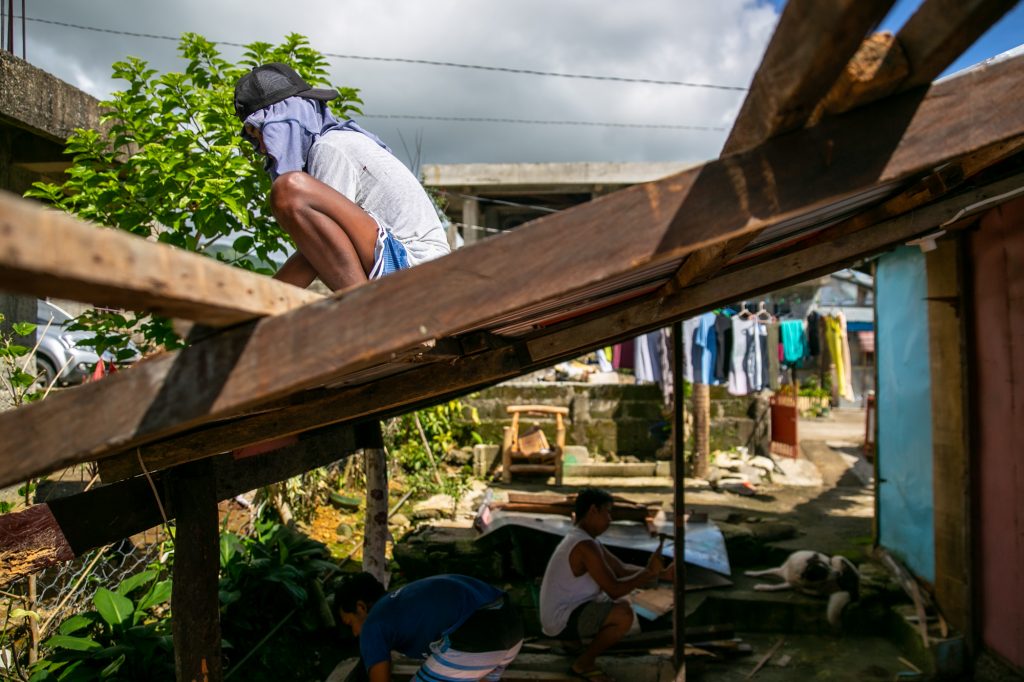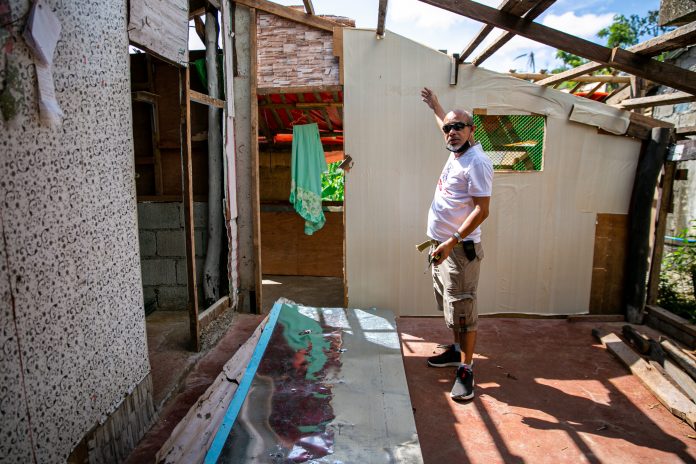Strong winds ripped off the roofs of houses in the town of San Miguel, Catanduanes province, when super typhoon Goni made landfall early morning of November 2 last year.
Angelo Torrenueba, 27, was trying to secure his laptop computer from the raging wind and rain when a tree branch tore through the wall and pierced the young man’s body.
His younger brother, Marlo, tried to help the helpless Angelo when suddenly the roof of their house was blown away.
“We were desperate, but it was impossible to call for help,” said Marlo. “There was no mobile phone coverage and if ever there was, no one would dare go outside to get us.”
It was already several hours later when the younger man managed to get help. By then Angelo was already dead.
Father Renato dela Rosa, social action director of the Diocese of Virac, was one of the first few people who were informed of the incident.
The priest was on the road when he received the news. He personally knew the Torrenueba siblings because their mother, Mercy, works in the parish convent.
“I had to break the news to her. She was devastated … and she regretted being poor,” said the priest.
The 52-year old woman would later tell the priest that her son would have been alive if they had a house with concrete walls.
Super typhoon Goni, the world’s most powerful tropical cyclone last year, killed at least 24 people and displaced more than 130,000 others south of the Philippine capital Manila.
The typhoon affected 1.9 million people in eight of the country’s 17 regions, leaving an estimated 845,000 people in need of assistance.
Nearly 140,000 houses have been damaged with more than 60 percent of the destruction recorded in the provinces of Catanduanes and Albay.

About 90 percent of the houses on Catanduanes island were damaged, forcing many families to stay in emergency shelters.
The typhoon damaged even stronger structures like government buildings, schools, and churches. Damage to infrastructure was estimated to have reached US$234 million.
In the wake of the series of typhoons that hit the country, Bishop Manolo de los Santos of Virac instructed the diocese’s social action ministry to help build houses before rebuilding damaged churches.
He wanted houses for the poor that can stand strong typhoons, saying that people need “disaster-resilient” structures that can protect them from the elements.
The diocese’s social action arm proceeded with the “early recovery phase” of the humanitarian response with a “disaster-resilient permanent shelter project.”
In February, Caritas Virac started to construct an initial 330 “disaster-resilient permanent houses” for families affected by super typhoon Goni.
Each house is worth US$1,800, enough to build a three-meters-by-six-meters structure that is made of concrete walls and a concrete slab roofing.
The initial 330 houses are funded by different Caritas organizations, including Caritas Internationalis, Caritas Manila, and Caritas Philippines.
A private individual donated money for the building of 30 houses.
The Congregation of Missions, or the Vincentians, also pledged to build 200 permanent houses in communities where the congregation has its missions.
Father Dela Rosa said the province of Catanduanes alone needs at least 10,000 units of disaster-resilient permanent houses but the Church can only provide “a fraction of it.”









